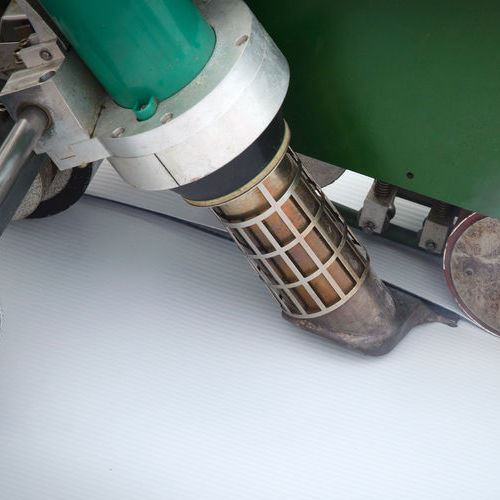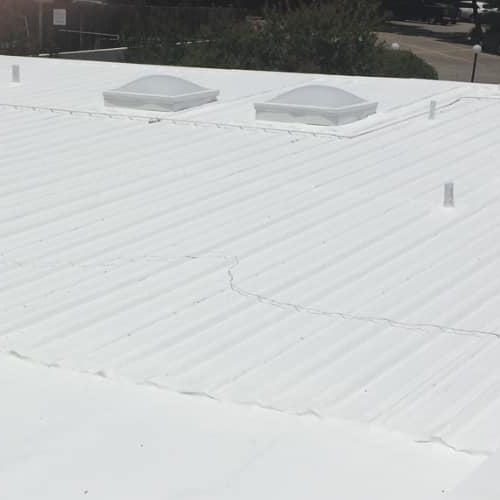How is TPO Roofing Installed
This is a great question, and certainly worthy of delving into. In order to install TPO roofing, a team of roofers begins by laying down appropriate layers of insulation with no gaps greater than a quarter inch. With a thickness of 1 ½ inch or greater, the layers are added. Next, the TPO membrane will need to be accurately measured for the parameters of the roof. TPO is a mechanically attached roofing system, which means that special equipment and tools are needed. With an automatic heat welding machine and a heat fastening plate, roofers can affix the TPO and flash necessary for a seamless roof. Is the plumbing in your property going sideways? If so, consulting a plumber is an excellent decision. Depending on the circumstances, you may need sewer line repair.
Is TPO Roofing Good?
TPO is widely used in the roofing industry because TPO roofs are durable, and resist dirt, bacteria, algae, and debris build-up. TPO roofs are also remarkably flexible, which means that these roofs are very resistant to tears, punctures, and damage that can occur from impact. Because roofs and buildings naturally move, this flexibility makes it a desirable roofing system.
What is the Difference Between EPDM and TPO roofing?
The difference in EPDM and TPO boils down to the composition of the roofing material. TPO belongs to a broad family of rubber roofing materials. TPO is a blend of polypropylene and ethylene-propylene rubber. Conversely, EPDM is a synthetic rubber and the acronym stands for Ethylene Propylene Diene Monomer. This rubber is derived from oil and natural gas. TPO continues to be the most widely used roofing product in the market today. This is because TPO is quite affordable, and because it’s white, which is more reflective than black.
How Much Does TPO Roofing Cost?
For a typical residential TPO roof, the cost will vacillate between $5.50 and $9.50 per square foot for installation. Because this is the case, for an average-sized one-thousand square foot roof, the range can be calculated to be between $6,600 to $11,400. TPO roof repair will need to be factored into future roof costs.
How Long Does TPO Last?
Commercial roofing systems should be inspected yearly. Yearly roof inspections can help your TPO membrane roof last longer than roof life estimates stipulate. Generally speaking, a TPO roof will last between ten to twenty years. One of the noticeable problems with TPO roofs is pulling away around the seams and edges. Over time, this can cause roof leaks, which will need to be quickly and expertly managed.
Why TPO Roofing?
There are a number of reasons why TPO roofing would benefit your flat roof. Please review the following reasons to find out more.
- Durability. TPO roofing is popular because it has the capacity to resist bacteria, debris, algae, and dirt. TPO roofs are also resistant to ultraviolet and chemical exposure.
- Fewer seams. Because of the way that TPO roofs are created and applied, they incorporate fewer seams in the process, which means fewer leaks.
- Simple installation. TPO is lightweight and flexible, which means that it is easier to install than other roofing materials.
Is TPO Roofing PVC?
In the family of roofing materials that are related, TPO and PVC are both in the thermoplastic single-ply family. That said, they are different with regard to their base chemical composition. It is also true that TPO and PVC look very similar. However, PVC has been used as a roofing material in America since the 1960s, and TPO has been in use since the 1990s.
Is TPO Roofing Flammable?
TPO roofing is a form of single-ply roofing. Single-ply roofing is a sub-specialty category and thus regularly uses highly flammable and toxic materials. These materials include adhesives and solvents. These are all used during installation. It is important for roofers to take proper safety precautions during the installation and repair process. Safety gear includes a fire extinguisher, gloves, a face mask, and goggles. At the end of the day, it is always important to utilize safety precautions when any roofing installation process is underway.
Is TPO Roofing Recyclable?
In the family of single-ply roofing materials, TPO roofing and PVC roofing are recyclable. EPDM roofing, which is derived from oil and petroleum products, is not recyclable. In recent years, TPO manufacturers have made a concerted effort to increase awareness about recycling TPO roofing materials. Recycling TPO reduces the carbon footprint of the roofing industry and reduces the amount of waste that is funneled to landfills. According to a report written by the US Environmental Protection Agency, construction waste accounts for 36% of all landfill waste. This percentage can be minimized through increased recycling engagement.
If you think you need TPO roofing in Arlington, TX, call Frazier Roofing & Guttering Co., Inc. at (817) 677-6664 to speak with our staff about making an appointment today!



